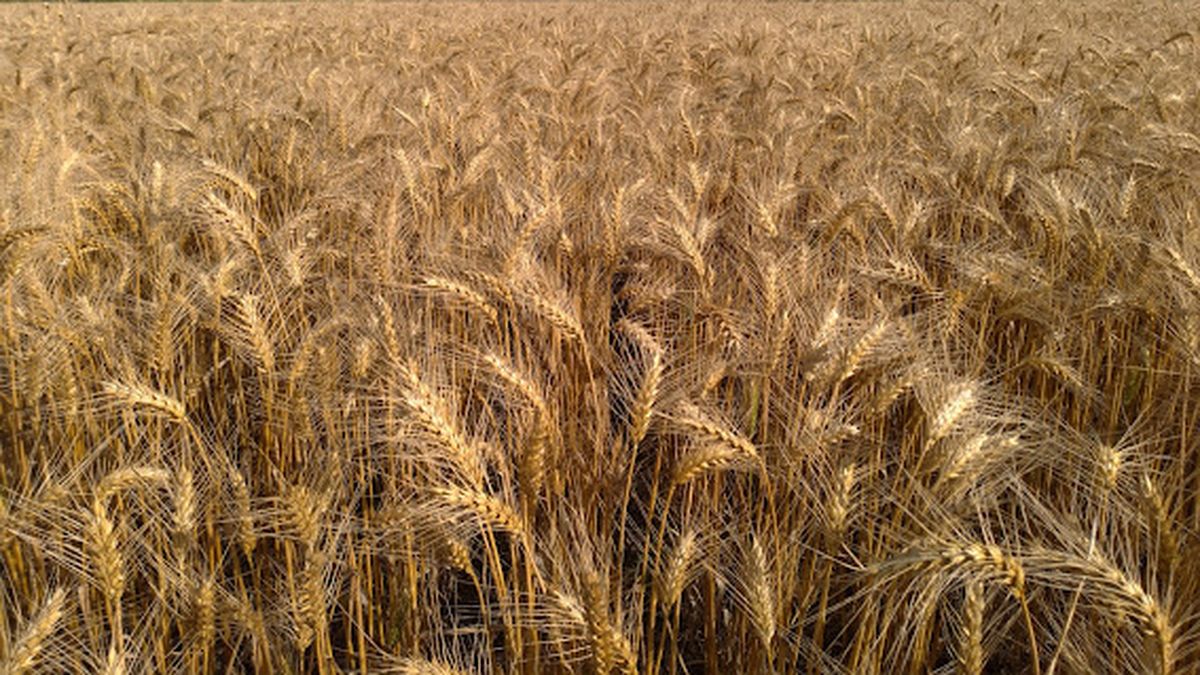In fact, the campaign has already started. For a few weeks now, a hundred trucks per day have been entering the port of Rosario, bringing thousands of tons of cereal from the north of the country, with the provinces of Salta, Jujuy, Corrientes, Santiago del Estero, Chaco, Formosa, Catamarca and Tucumán as protagonists.
They are the first plots that are planted and therefore, the first that are threshed. According to the latest update from SAGyP, the national harvest barely reaches 11% because in reality, the heavy harvest will begin in the coming weeks in the center of the country, to end in December and January in the most productive areas, which are located in the south of the province of Buenos Aires.
Regarding the harvest in the north, the Rosario Stock Exchange confirmed in its latest weekly report that “during the last days of October and the first days of November, 2,986 trucks loaded with wheat would have entered the ports of Greater Rosario, the highest figure for the week in seven years.”
Martin Biscaisaquepresident of Argentrigohe assured Scope that “although the first trucks are already arriving in Rosario at a good pace, this does not represent an exceptional situation at the moment.” What happens is that in the northern provinces – for example in Santiago del Estero – wheat crops faced a notable shortage of water and produced average yields of between 8 and 10 quintals per hectare. In the north central area of Santa Fe, specifically in Sastre, yields range between 15 and 23 quintals per hectare. These are very low returns at critical times from a financial point of view.
According to Biscaisaque, “wheat is a key crop in the financial planning of many producers and that explains why it is marketed quickly.”
Rains could improve yields
According to the data collected by the last Weekly Agricultural Panorama of the Buenos Aires Grain Exchangethe wheat harvest marked a progress of 4.4 pp and at the national level it reached 12.1% of the suitable area (slightly above official estimates), with an average yield of 12.9 qq/Ha.
Fernando Rivara, president of the Federation of Collectors, highlighted in dialogue with Ámbito that “”what is coming from the north, arrives with poor yields and is being sold as the financial needs of each individual producer demand it. The cultivation in what is the central area of the province of Buenos Aires looks good.”
According to Rivara, “the last rains were very good for the crop to advance in the production cycle. I think we will start harvesting the first week of December. As for the south of Buenos Aires, although there is still a long way to go, for now it is going very well.
From Argentrigothe entity that groups cereal producers, warned that “in the southeast of the province of Buenos Aires, October was a challenging month with little rain and several days above 30 degrees, which generated fear of a possible decrease significant in returns. However, the rains in early November and the cool temperatures predicted for the next 21 days allow us to be optimistic and expect average yields.
Photo of wheat.jpeg
The rains in early November and the cool temperatures predicted for the next 21 days allow us to be optimistic and expect average yields.
Despite this, some areas of the party Tandil, Necochea and San Cayetano They did not have the same luck with the rain but that would be compensated by other regions of those same parties that did have timely rains. In areas such as Madariaga, Mar del Plata, Balcarce and Miramar, slightly above-average yields are also expected. In the southwest, the situation is similar; Although the heat of October accelerated the crop cycle, recent rains and cool weather could help us achieve average yields.
The average temperatures and cool atmosphere felt in much of the central region is very encouraging for cereal production. It is said that “if in November we have to use a diver, it is good news for wheat; On the other hand, if we see people on the beach and getting into the sea, we should be worried.”
Producers closely follow the pulse of the market
With just a few days left until the new campaign officially begins, and with several hectares already harvested, the export sector barely declared sales abroad. In fact, they are the lowest in the last nine years.
According to the Rosario Stock Exchange, “purchases by the export sector as of 10/30 amount to 3.4 Mt of 2024/25 wheat, which represents 18% of projected production, when the average for this point is 20 pp above. In more graphic terms, to reach a “normal” level of coverage for the new campaign, exports should have purchased 6.9 Mt more 2024/25 wheat. However, for the new campaign, only 720,000 tons of external sales have been declared, so only 21% of the sector’s purchases would be supported by external sales.
Another aspect to consider is that hedging in wheat futures reaches record levels, largely due to the expectation that there is a possible unification of the exchange rate (exit from the stocks) that would improve the price of the cereal.
Rivara also agreed with this observation and explained that “everyone is waiting to see what happens, because if the exchange rate is released that would mean a jump in the price of wheat. “People have expectations and are waiting a little.”
In addition, there are some bearish factors that do not help in the local market, where the available price for wheat is increasingly depressed due to the connection with the new harvest and an extremely complex international market. Thus, the slate for wheat adjusts to around $190,000/t, more than 10% below the level of two weeks ago. The numbers are not the best, they are simply acceptable.
In reference to marketing, Biscaisaque highlighted that “in addition to the purchased export position – which currently has about 3.4 million tons and only declared sales of 0.7 million – it is crucial to closely follow the attitude of Russia, which It is setting the price level in the world market.
Let us remember that the Russian government “suggested” that country’s exporters to consider the needs of the domestic market, which is why prices began to depress internationally.
Final stretch for wheat in Argentina
The campaign can still bring good news for our country’s producers. On the one hand, in Brazil the harvest is about to end and production estimates have been revised downwards according to the consulting firm Stonex. The neighboring country would have 7.5 Mt of wheat, 400,000 tons less than previously expected and far from the 9 Mt projected by the USDA. Let us remember that Argentina has always been the main supplier to the Brazilian market and with these prices it could play an even more relevant role.
Meanwhile, private companies here estimate a production of between 18 and 19 million tons, with a carry of around 2.5 million tons. For Biscaisaque, “a great effort will have to be made to sell the 14 million tons that we will have available for export in a key first semester due to sales outside of Mercosur and in the second part of the year with Brazil as the main buyer.
Source: Ambito
I am Pierce Boyd, a driven and ambitious professional working in the news industry. I have been writing for 24 Hours Worlds for over five years, specializing in sports section coverage. During my tenure at the publication, I have built an impressive portfolio of articles that has earned me a reputation as an experienced journalist and content creator.




